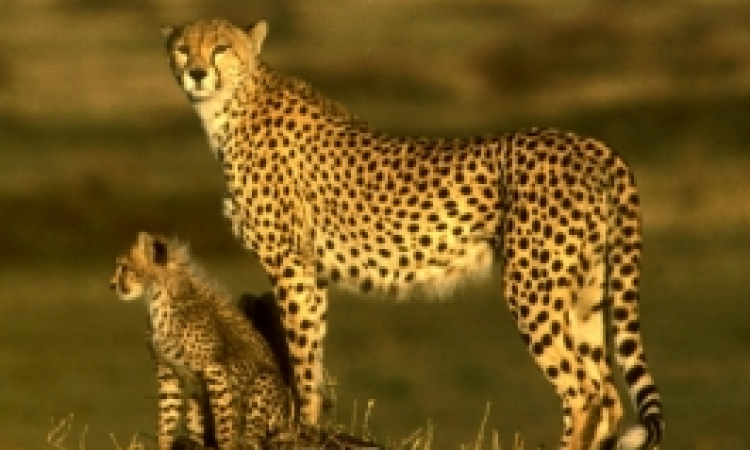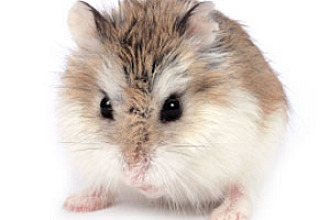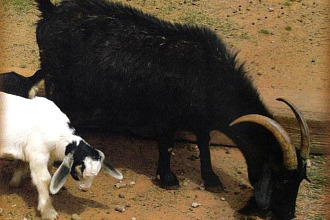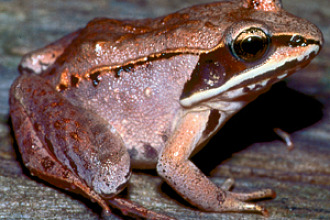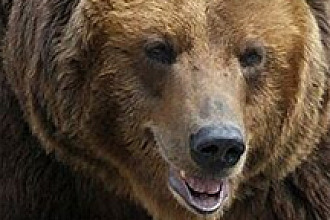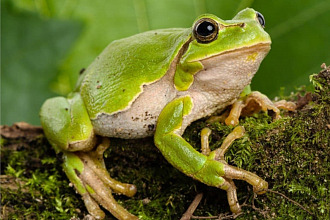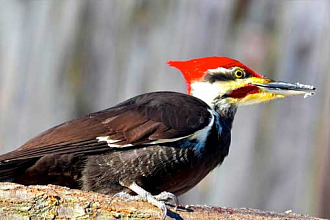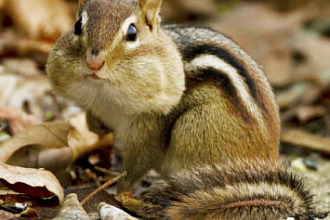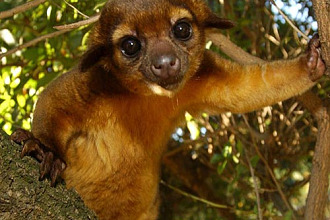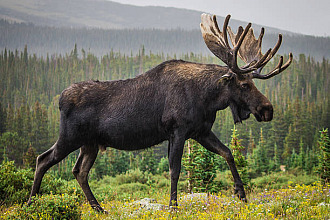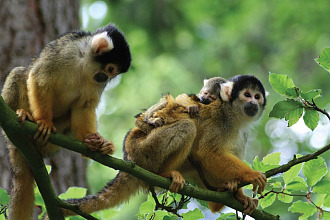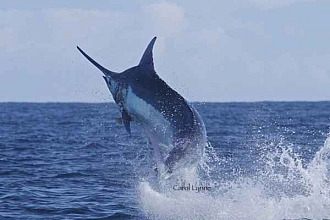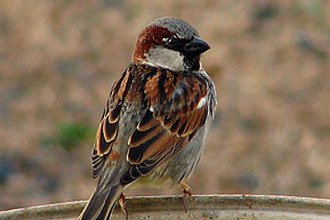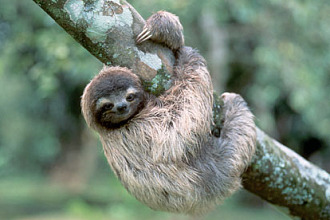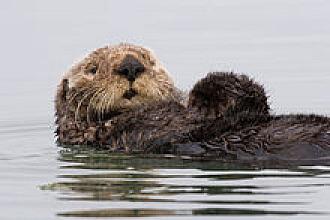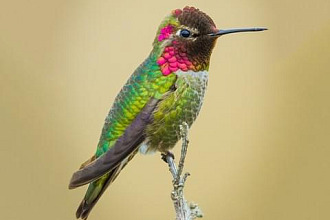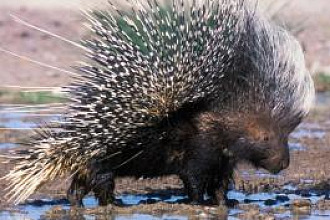You know you are looking at a cheetah if there is what looks like a black "tear mark" running from the corner of a spotted cat's eyes down the sides of its nose to its mouth.
That mark is not there just so you can distinguish it from a leopard. It was given the cheetah as a not-by-accident aid to help keep the sun out of its eyes since cheetahs hunt by sight not scent and do so in daylight, Therefore they need good daytime vision as well as long-distance vision. Mother cheetahs, normally loners, spend a year and a half training their cubs to hunt. Their babies have a smoky-colored mantle of long wooly hair which runs down their backs. That, along with spots, helps camouflage them—and all cheetahs -in tall grass. Cubs and their mothers purr when contented, both when inhaling and exhaling. The cheetah makes several other sounds also, but they do not have the two-piece hyoid bone in the throat that allows four of the big cats to roar. However, cheetahs don't need to roar. Their hunting mode is stealth—until the last moments.
Everything about cheetahs is built to aid hunting. But their claim to fame is in being the fastest land animal in the world! Their acceleration rate is 0 to 60 in 3 seconds—that's a rate that rivals and exceeds many of the "ten fastest cars" in this world to date! Why all the speed? Like every other creature, cheetahs need nourishment to live. When chasing prey, they let go with their maximum speed in a final less-than-a-minute spurt to pounce upon their prey. This is after stalking and chasing for perhaps three and a half miles—keeping their prey in view. Incidentally, and not by accident, the cheetah's teeth are small in proportion to other hunting cats. This is because they need larger nasal cavities that allow for increased oxygen intake during that fast chase. That works together with their not-by-accident enlarged heart and lungs to increase overall oxygen efficiency while their respiratory rate increases from 60 to 150 breaths per minute by the end. Other than the dewclaw—and different from most other cats, all the claws of the cheetah are exposed, ready! That, too, is a not -by-accident gift since exposed claws give more traction when running! Another not-by-accident hunting aid the Creator gave the cheetah is its tail. Often a prey, while running for its life, makes a quick turn in the midst of the chase. At that moment the cheetah, while racing perhaps 96 kilometers an hour, can make a sharp turn also—using that not-by-accident powerful tail, much as a rudder of a boat is used! In catching the prey, if it is small, a bite through the skull suffices. A larger animal, caught, is suffocated by the cheetah clamping onto its prey's windpipe for up to five minutes if necessary. The cheetah will then begin to quickly devour its prey, unless challenged by another predator. If that occurs, the cheetah does nof fight for its right to the meal it has caught so carefully. There is good reason for this not-by-accident common sense, we might say. Cheetahs seem to know there is danger in being wounded in a fight. ANY wound that would slow them down in the chase would mean for them no food the next time they are hungry. They don't store food for later. They only kill to eat right then. But if they are hurt and cannot catch their next meal, they might die. For them, everything depends on their entire body being in good condition for the next chase. So, rather than risk a wound that could risk its very life, it turns away from a fight. That's good sense!
It's good sense for us, also, to know when to keep still and let God defend us. There's no power stronger than our God, who wants to be our Defender. He can even turn an enemy into a friend. Why not try Him? Ask for His help—to fight our battles His way!
Picture originally found here

